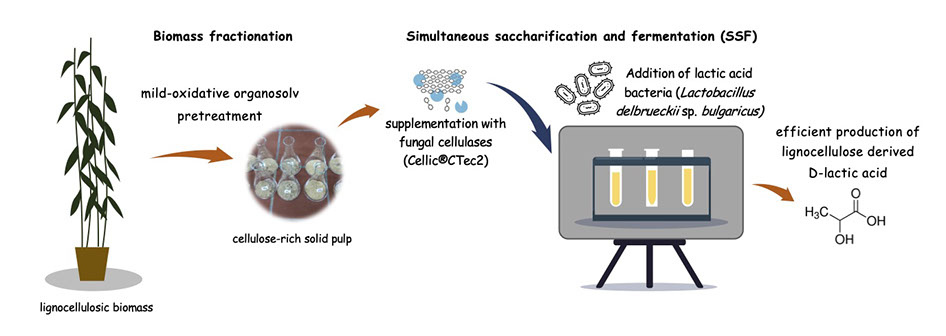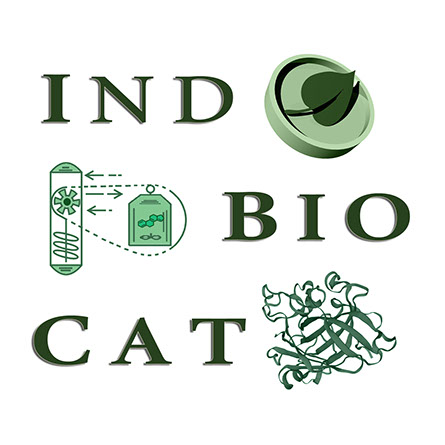
Production of second generation biofuels from lignocellulosic biomass
Renewable energy sources such as second-generation biofuels stand in the limelight due to their high potential to evolve as an alternative to fossil fuels and alleviate environmental issues caused mainly by greenhouse gas (GHG) emissions, without competing with food and feed industry. Lignocellulosic biomass, such as agricultural or forestry residues, is an abundant and low-cost feedstock that plays a key role not only for bioethanol production but also for the production of other value-added bio-based products under the biorefinery concept. However, lignocellulosic ethanol production faces many obstacles due to the complexity and recalcitrance of lignocellulosic biomass and requires a two-step process in order to overcome these barriers. Pretreatment is the first step in the process of ethanol production from lignocellulose, aiming in the disruption of the complex polysaccharide network of the plant cell wall rendering cellulose vulnerable to enzymatic bioconversion. The second step is the conversion of carbohydrates present in lignocellulosic biomass, in the form of cellulose and hemicellulose, to monomeric fermentable sugars with the use of lignocellulolytic enzymes. Our goal is the development of enzymatic saccharification processes using novel biocatalysts and the subsequent process optimization. In order to achieve this goal, heterologous expression of lignocellulolytic enzymes into yeast strains is performed with the aim to generate more efficient enzyme cocktails. Furthermore, custom made liquefaction bioreactors are employed in order to deal with high solids content related issues. High gravity saccharification and fermentation stand to be a challenging but yet crucial strategy for a cost-competing bioethanol production process. Last but not least, production of bio-based products of high added value seem to be an attractive way of lignocellulosic biomass utilization. Our lab is investigating the biosynthesis of such products using saccharified lignocellulosic biomass as medium for several microorganisms.

Valorization of lignocellulosic biomass for the bioconversion of furan monomers through novel biocatalytic enzymes
The continuously increasing energy need in modern societies, along with the depleting fossil fuel reserves, has made the emergence of a sustainable source imperative for the production of biofuels and chemicals. In this regard, lignocellulosic biomass, derived from agricultural and forestal residues, is an abundant renewable source of carbon, which also contributes to the reduction of the greenhouse gas emissions, without competing with the food industry. Our goal is to produce furan monomers such as 2,5-furandicarboxylic acid (FDCA), 2-furancarboxylic acid (FFA) and 2-furfurylamine (FFA) from lignocellulosic biomass by means of biocatalysis. However, the valorization of the lignocellulosic biomass includes several steps due to the complexity of the plant cell. The first step is the pretreatment process, which aims to increase the susceptibility of the material to hydrolysis. The second step is the hydrolysis process, where monomeric sugars are produced from the polysaccharides of cellulose and hemicellulose. In order to achieve the production of furan monomers, these sugars are converted to hydroxymethylfurfural (HMF) through chemical catalysis and dehydration. Then, HMF functions as a substrate for novel biocatalysts such as oxidases, monoxygenases and transaminases generated through heterologous expression in our lab. The subsequent furan derivatives are considered high added value chemicals which can also be the precursors towards bio-based polymers.

Biotechnological utilization of lignocellulosic biomass for the production of lactic acid and energy
Lactic acid is a natural organic acid with a long history of use in cosmetic and pharmaceutical industries, and moreover for the production of oxygenated chemicals, plant growth regulators, and special chemical intermediates. Apart from that, it is considered a specialty chemical with various applications both in the food and non-food industries. It has been utilized as a raw material in the production of biodegradable polylactide (PLA). Thus, the recent demand for PLA sharply increased the global interest in lactic acid production. To date, the successfully realized commercial production of lactic acid has involved the utilization of pure sugars or edible crops. Nevertheless, on account of concerns over feedstock costs and the limited worldwide food availability, lignocellulosic resources have become attractive and inexpensive raw materials for the production of lactic acid. Our aim is to find methods for utilizing lignocellulosic biomass for the ultimate purpose of producing lactic acid and energy under the optimum conditions, as well as useful metabolites through the action of suitable microorganisms. This research is based on the ability of specific bacterial strains to metabolize different sources of carbon, resulting in the production of products useful for the industry.

